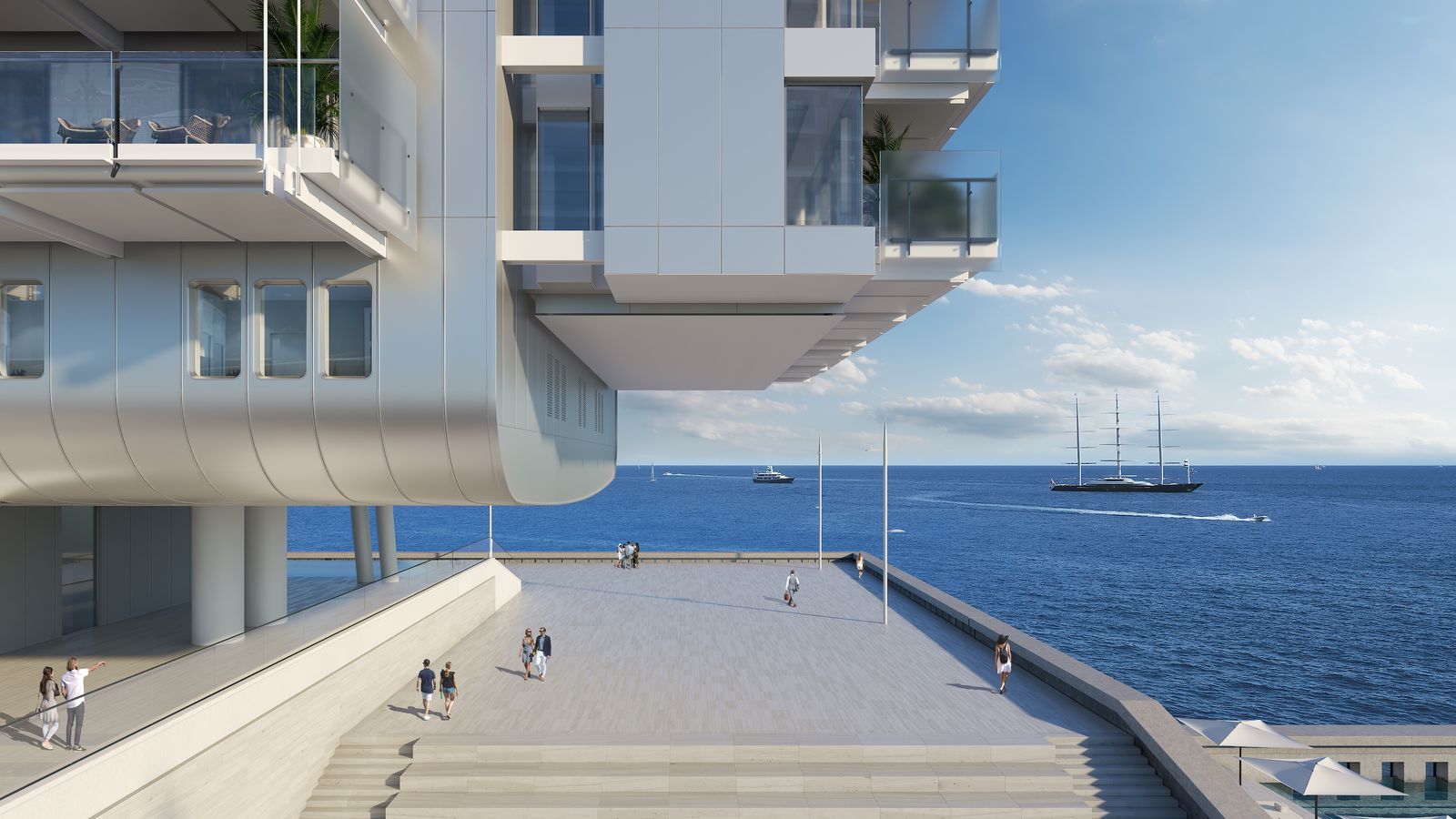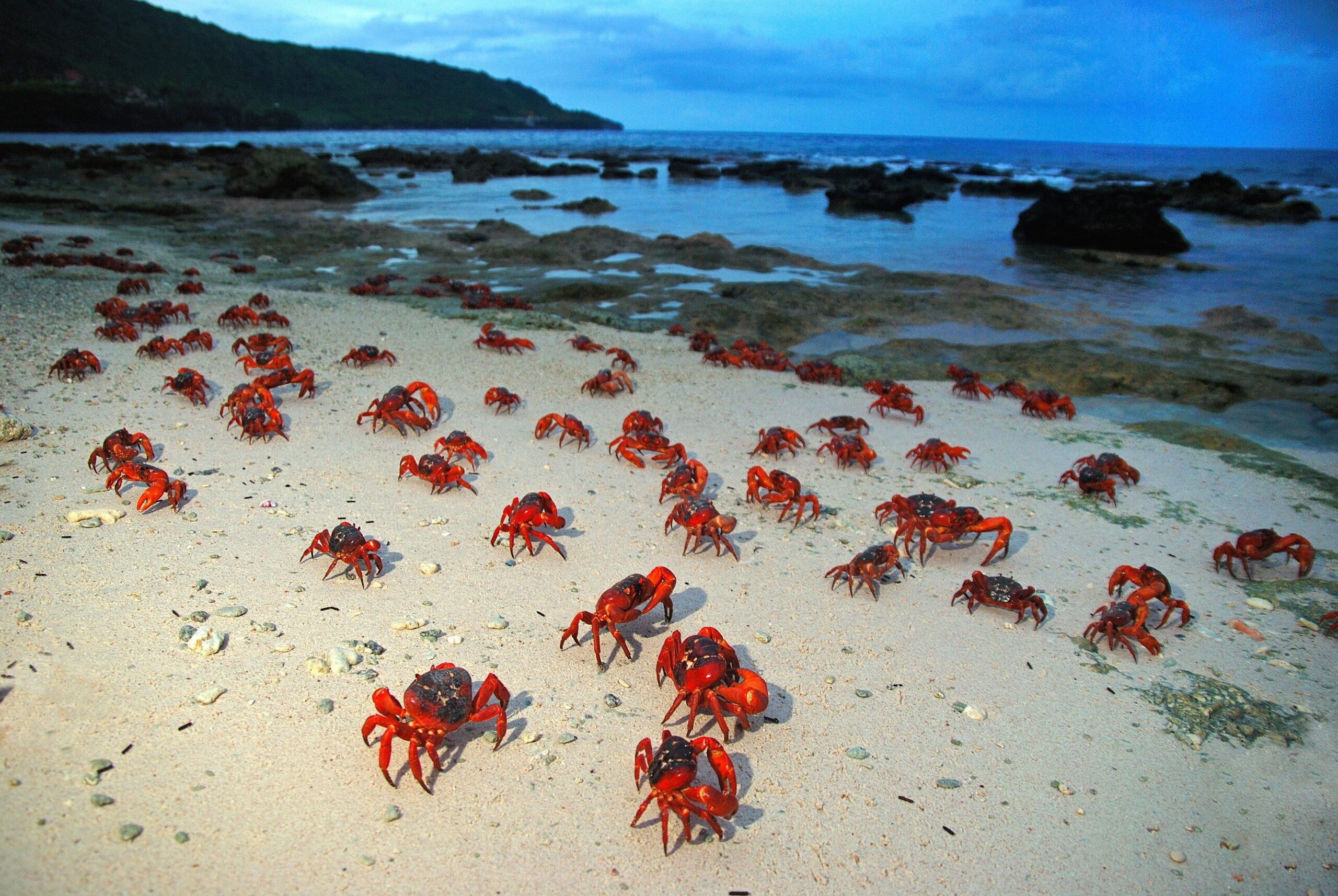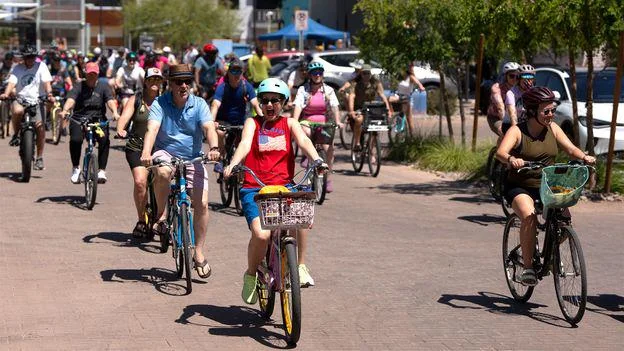Imagine standing on a sun-drenched promenade, the Mediterranean lapping just a few feet below, with sleek villas and apartment towers curving gracefully into the horizon. That’s Mareterra today—a shimmering extension of Monaco that feels like it’s always been there. But rewind eight years, and this spot was open water, teeming with fish and swaying seagrass. As someone who’s chased sunsets along the French Riviera for years, I’ve watched Monaco evolve from a compact jewel box of a city-state into something bolder, blending old-world glamour with cutting-edge ambition. This €2 billion project isn’t just about adding land; it’s Monaco’s bold bet on a future where luxury and sustainability crash like waves on the shore. Let’s dive in.
A Tiny Principality’s Big Squeeze: Why Monaco Needed More Land
Monaco, squeezed between the Alps and the sea, has always punched way above its weight. At just over two square kilometers—half the size of New York’s Central Park—it houses 39,000 residents, plus 40,000 daily commuters from France and Italy. That’s the highest population density on Earth, folks. No wonder space feels like the ultimate luxury here.
For over a century, Monaco’s leaders have turned to the sea for relief. Land reclamation started in the 1880s, when they added 5.5 hectares around the harbor to build railways and docks. By the 1970s, under Prince Rainier III—the “Builder Prince”—they’d reclaimed 20% of today’s territory, creating districts like Fontvieille and Larvotto Beach. I remember my first visit in the ’90s; Larvotto felt like a miracle, an artificial sandy stretch where locals picnicked amid the yachts. But with millionaires flocking for zero income tax and endless glamour, demand exploded. Enter Mareterra: a six-hectare lifeline announced in 2013, boosting Monaco’s footprint by 3%.
This isn’t whimsy—it’s survival. Without it, housing prices would skyrocket even higher (they’re already €52,000 per square meter on average), and the principality risks losing its edge as a global playground.
From Blueprints to Breaking Ground: The Mareterra Timeline
Announced by Prince Albert II in 2013, Mareterra—meaning “sea and land” in Italian—kicked off with a treaty allowing the extension. By 2016, marine biologists were relocating protected seagrass, a nod to the prince’s ocean conservation passion.
Construction ramped up in 2018: 18 massive concrete caissons, each weighing 10,000 tons, formed a curved seawall to mimic natural currents and minimize erosion. They pumped out seawater and filled the void with 750,000 metric tons of Italian sand—delivered by barge to spare local roads. By December 2019, the land was solid. Amid COVID delays, the team hit stride, adding buildings and greenery. Remarkably, it wrapped six months early, with public inauguration on December 4, 2024, by Prince Albert and Princess Charlene.
Today, it’s alive: residents moved in spring 2025, and the Grimaldi Forum expansion buzzes with events. As I strolled the promenade last summer, the seamless blend of old Monaco and new felt like a love letter to progress—efficient, elegant, and just a tad audacious.
Engineering Marvels: How They Built a Neighbourhood on Water
Building on water sounds like a sci-fi plot, but Monaco nailed it with tech that could teach Dubai a thing or two. The key? Those caissons—waterproof boxes sunk 50 meters deep, linked to form a belt that withstands seismic shifts and rising seas up to 2050 standards.
Inside, they layered limestone aggregate for stability, then topped with sand for a natural feel. The curved design? Genius—it channels ocean currents to oxygenate the water, preventing stagnation. Over 3,500 workers from 40 countries collaborated, using 9,000 square meters of solar panels and seawater heat pumps from day one.
I once chatted with a Bouygues engineer over coffee in Larvotto; he joked it was “like assembling a Lego set underwater, but with billion-euro stakes.” The result: a resilient eco-district that floats subtly above the waves, proving small nations can innovate big.
The Caisson Wall: Monaco’s Underwater Fortress
Those 18 behemoths aren’t just barriers—they’re habitats. Textured surfaces encourage coral growth, turning potential eyesore into biodiversity booster. Each 26 meters tall, they arrived by sea, a logistical ballet avoiding Monaco’s narrow streets.
Sand and Seabed Symphony
Filling the 750,000-ton void took precision dredging to avoid silt clouds harming fish. Artificial reefs inside the belt now host new life, monitored by AI sensors. It’s engineering poetry: reclaiming land while enriching the sea.
Star Architects Shape a Seaside Dream
Mareterra’s skyline reads like an architecture hall of fame. Masterplanned by Valode & Pistre, it features Renzo Piano’s Le Renzo—a 17-story “cruiser” floating five meters above ground, with shops below and a seawater pool cantilevered over the ocean.
Norman Foster, Stefano Boeri, and Tadao Ando handled villas and townhouses, blending minimalist lines with Mediterranean flair. Michel Desvigne’s landscapes weave in 800 Tuscan trees and native plants, creating a “green hill” that echoes Monaco’s terraced vibe.
Piano, who redesigned Larvotto Beach, called it his “love letter to the sea.” Wandering Le Renzo’s base, I felt that—the building hugs the water like an old friend, blurring urban and aquatic worlds.
Le Renzo: Piano’s Oceanic Icon
This 125-meter behemoth, with its blue-gray facade, evokes a luxury liner. Balconies shade summer sun, and the low-slung pool invites swims mere meters from the sea. It’s not just housing; it’s theater.
Villas by Visionaries: Foster, Boeri, and Ando
Ten waterfront gems, six with private docks, mix concrete minimalism (Ando) with green vertical gardens (Boeri). Foster’s designs prioritize flow—open plans that spill onto terraces. At €150 million-plus, they’re for those who collect art and addresses.
Green at Its Core: Sustainability in Every Wave
Mareterra isn’t greenwashing—it’s Monaco’s first HQE-labeled eco-district, chasing carbon neutrality by 2050. Solar covers 40% of energy needs; seawater loops heat and cool buildings, slashing consumption by 80%.
Rainwater harvests irrigate parks, 200 EV stations dot the underground lots, and 600 meters of bike paths encourage pedal power. Half the land—three hectares—is public: promenades, plazas, and a marina for 16 eco-yachts.
Prince Albert, a deep-sea diver and conservationist, insisted on it. “Build without harming,” he said. Early on, they transplanted 384 square meters of Posidonia seagrass using tree-spade tech—a world first. Now, artificial beds thrive, hosting fish corridors. Critics worried about coral disruption, but post-construction surveys show biodiversity up 15%.
It’s the kind of project that makes you hopeful: luxury without the guilt.
Protecting the Posidonia: A Seagrass Saga
This protected meadow sequesters carbon like a forest. Relocating it root-and-all to Larvotto’s reserve was nail-biting—success rate? 90%. Today, it anchors new growth, proving tech can heal what it builds.
Carbon Crunch: Tech That Tames Emissions
Heat pumps draw from the sea’s steady 15°C, while pergolas with PV cells generate power. The goal: under 15 kWh per square meter annually. It’s not perfect, but in a density hotspot, it’s revolutionary.
Living the Dream: What Daily Life in Mareterra Looks Like
Wake to sea views from a €40 million apartment, sip coffee on a 200-square-meter terrace. Stroll the 510-meter promenade to Larvotto Beach, past pop-up art and gelato stands. Families picnic in the central park; joggers hit the paths linking to Monte Carlo.
The marina hums with tenders ferrying superyacht guests, while Marlow—Monaco’s first British fine-diner—serves elevenses with a side of people-watching. Underground, 165 spots ease parking woes, but most folks walk—the district’s 19,000 square meters of pedestrian space demand it.
I picnicked there last month; kids chased waves under Le Renzo’s shadow, and it hit me—this isn’t sterile luxury. It’s vibrant, like Monaco with breathing room.
The Price of Paradise: Real Estate Realities in Mareterra
Mareterra’s 110 apartments, 10 villas, and four townhouses sold off-plan at record speeds—€120,000 per square meter for prime spots, double Monaco’s average. A 400-square-meter flat? €48 million. Villas top €150 million, drawing Europeans (French, Swiss) and celebs eyeing tax perks.
Why so steep? Scarcity, sure, but also the ecosystem: concierge spas, hammams, and sea-fed infinity pools. Resales could double in five years, per Knight Frank. It’s transactional gold—privately funded, but Monaco pockets 20% VAT on sales, fueling public coffers.
For buyers: consult agents like Savills for viewings. Tools? Knight Frank’s Wealth Report tracks trends; Sotheby’s handles discreet deals.
| Property Type | Size Range (sq m) | Price Range (€) | Key Features |
|---|---|---|---|
| Apartment | 100-300 | 12-36 million | Sea views, EV charging, spa access |
| Townhouse | 400-600 | 48-72 million | Private gardens, hilltop privacy |
| Villa | 800-2,000+ | 80-150+ million | Waterfront dock, infinity pool |
Compared to Monaco averages (€52,000/sq m), Mareterra’s premium reflects its edge—literally.
Pros and Cons: Weighing the Waves
Mareterra’s a triumph, but no project’s flawless. Here’s the balance.
Pros:
- Space Boost: 1,000 new residents without cramming existing neighborhoods.
- Eco Wins: Biodiversity up, carbon footprint down— a model for coastal cities.
- Economic Ripple: €2 billion injection, plus tourism from expanded Grimaldi Forum.
- Lifestyle Lift: Pedestrian haven with parks, paths, and promenades for all.
Cons:
- Sky-High Costs: Exclusivity prices out middle-class Monegasques; locals fear “billionaire bubble.”
- Eco Risks: Despite mitigations, dredging stirred sediments—long-term coral health TBD.
- Visual Clash? Some say the “floating” towers jar Monaco’s Belle Epoque charm.
- Dependency: Relies on sea levels staying put; climate skeptics call it hubris.
Overall, pros dominate, but it sparks debate: growth for whom?
People Also Ask: Your Burning Questions on Mareterra
Drawing from real searches, here’s what folks are Googling about Monaco’s sea-born star.
What is the Mareterra project in Monaco?
Mareterra is a €2 billion eco-district reclaiming six hectares from the Mediterranean, adding luxury homes, a marina, and parks. Unveiled in 2024, it’s Monaco’s greenest neighborhood, blending Renzo Piano architecture with biodiversity boosts.
How did Monaco build land from the sea?
Using 18 concrete caissons as a seawall, they drained water and filled with 750,000 tons of sand. Curved to preserve currents, it took from 2018-2024, with marine experts ensuring minimal disruption.
What is the environmental impact of Mareterra?
Positive overall: Relocated seagrass thrives, artificial reefs enhance habitats, and solar/heat pumps cut emissions. Critics note initial sediment stir, but studies show 15% biodiversity gain.
How much does property cost in Mareterra?
Apartments start at €12 million (€100,000-€120,000/sq m); villas hit €150 million. Sold out off-plan, resales could double soon—prime Riviera real estate at its priciest.
When was Mareterra completed?
Public opening: December 4, 2024. Built six months ahead of 2025 schedule, full residency by spring 2025.
FAQ: Real Talk on Monaco’s Sea Extension
Q: Is Mareterra open to tourists?
A: Absolutely—three hectares of public parks, promenades, and the marina welcome all. Tour the Blue Grotto for a peek at the caissons; it’s free and fascinating.
Q: How does Mareterra compare to past reclamations like Fontvieille?
A: Greener and smarter—Fontvieille (1970s) added industry; Mareterra prioritizes eco-tech and peds over cars. Both expanded 20%+ of land, but this one’s carbon-focused.
Q: Can average folks afford to live there?
A: Tough—entry-level is €12 million. But public spaces ensure it’s not just for the ultra-rich; think enhanced beaches for all.
Q: What’s next for Monaco expansions?
A: Smaller tweaks, like Larvotto renewals. Prince Albert eyes vertical growth, but sea projects pause for eco-reviews.
Q: Where to buy similar luxury nearby?
A: Larvotto resales (€65,000/sq m) or Savills Monaco for off-plan alerts. For navigational ease, check Knight Frank’s Riviera guide.
A Personal Toast to Tomorrow’s Tide
As the sun dipped behind yachts last October, clinking glasses at Marlow, I couldn’t shake the thrill. Mareterra isn’t just bricks and sand—it’s Monaco whispering, “We’ve got this.” Sure, the prices sting, and eco-watchers keep score, but here’s the heart: a place born of necessity now pulses with life, from transplanted seagrass to toddler giggles on the green. I’ve lost count of Riviera jaunts, but this one’s etched deep—a reminder that bold dreams, done right, can rise with the sea. What’s your Monaco must-do? Drop a line; let’s chat waves and wonders.
(Word count: 2,748)




